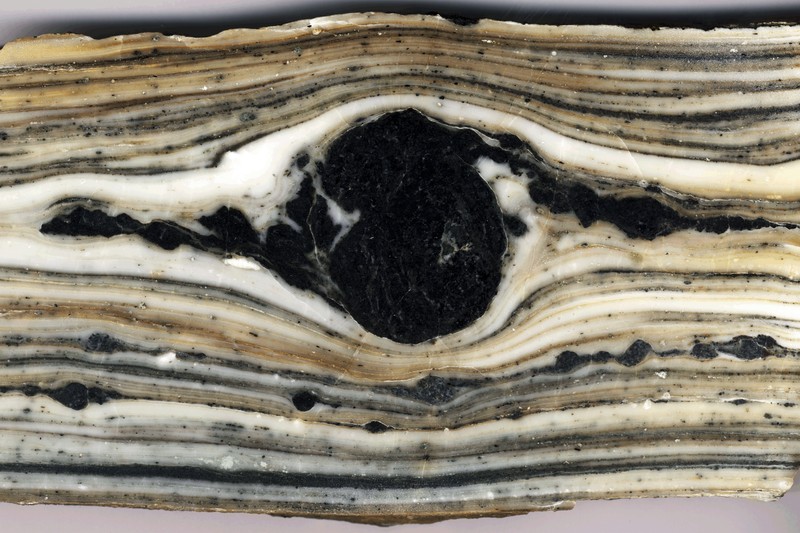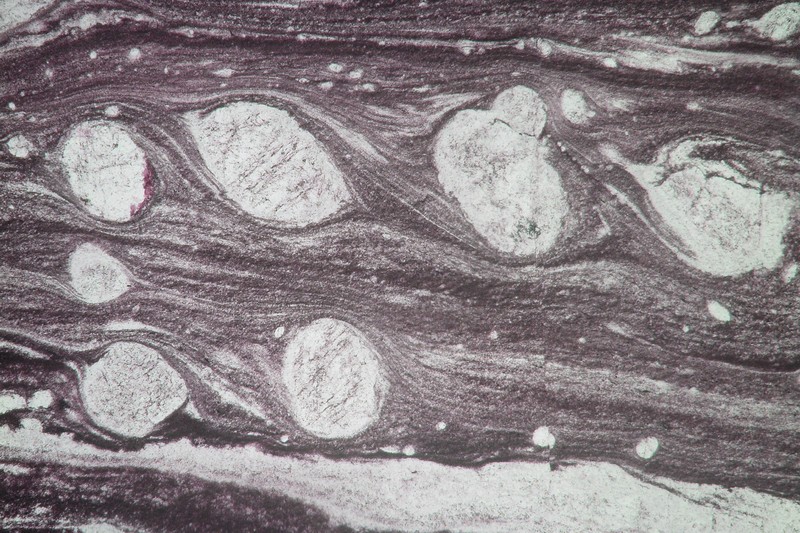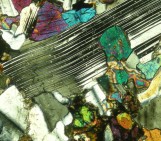Philippe Leloup brings us this week’s Imaggeo on Mondays, with tales from a mountain trail that show a geologist can never resist a good rock!

In reality, this shiny slab of rock is about 20 centimetres across. Polished to perfection, the layers of marble and amphibole are beautiful to behold. (Credit: Philippe Leloup via imaggeo.egu.eu)
This image is that of a polished slab of a rock composed of interlayered marbles and amphibolites. The sample was once part of a small dry-stone wall bordering an outdoor kitchen along a trail along the Ailao Mountain Range in China (or Ailao Shan in Chinese).
As I passed by, a small black eye looked at me, and I couldn’t resist asking the owner to give me that stone – one that could easily be replaced by any other rock nearby, and he kindly agreed. The rock was special for me because I felt that its structure would be spectacular.
The Ailao Range is part of the Ailao Shan – Red River shear zone, a region that stretches for more than 1000 kilometres – from southeast Tibet to the Tonkin Gulf. During the Oligo-Miocene, the Indochina bock (encompassing Vietnam, Cambodia, Laos and Thailand) was pushed away from the collision between the Indian and Asian continents and moved several hundreds of kilometres towards the southeast along that ~10 kilometre-wide shear zone. Today, evidence that intense ductile deformation occurred are found in gneiss and marbles showing steep foliation, horizontal lineation, and numerous left-lateral shear features – a type of deformation that leaves rocks looking like this:

A thin section microphotograph (the total width is about 0.5 mm) showing several feldspar crystals with bended tails. These tails show that they have slowly rotated counter-clockwise. These rolling structures are characteristic of left-lateral ductile deformation. (Credit: Philippe Leloup via imaggeo.egu.eu).
When I cut the rock it turned out that the amphibole layer had a very special shape, like a Swiss roll, resulting from simple shear – something that revealed spectacular colours and a stunning shape when seen in section.
By Philippe Leloup, University of Lyon
Imaggeo is the EGU’s open access geosciences image repository. Photos uploaded to Imaggeo can be used by scientists, the press and the public provided the original author is credited. Photographers also retain full rights of use, as Imaggeo images are licensed and distributed by the EGU under a Creative Commons licence. You can submit your photos here.


